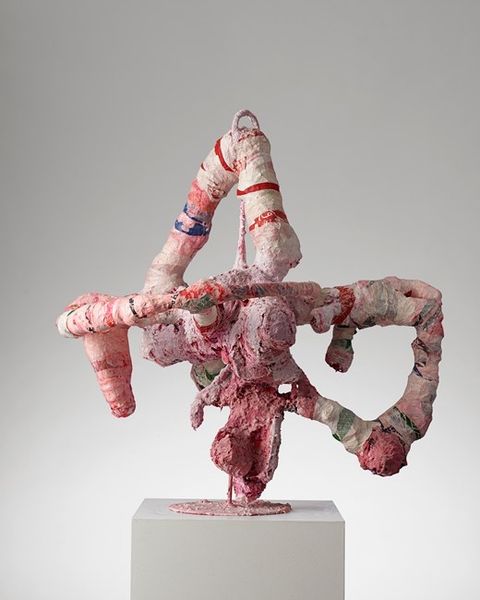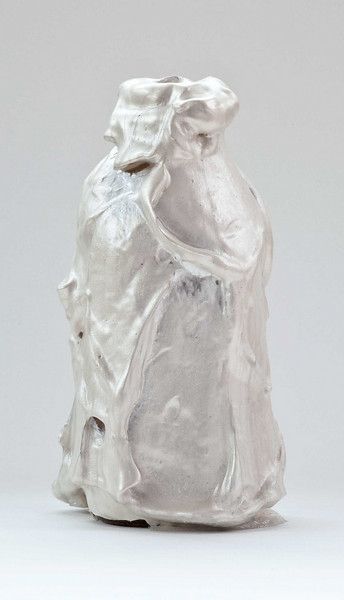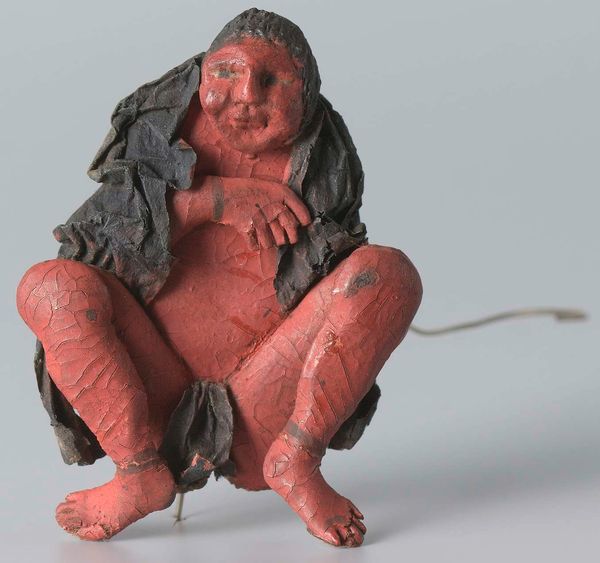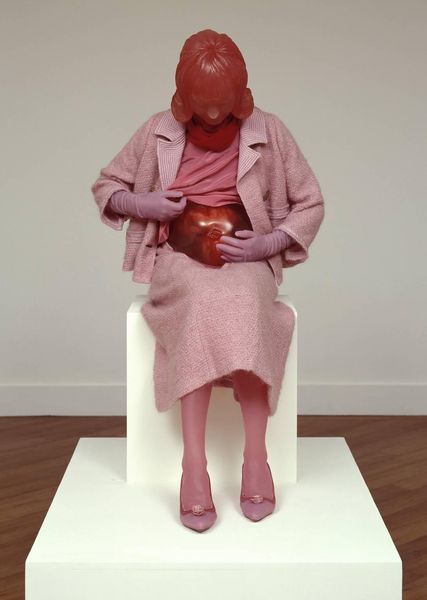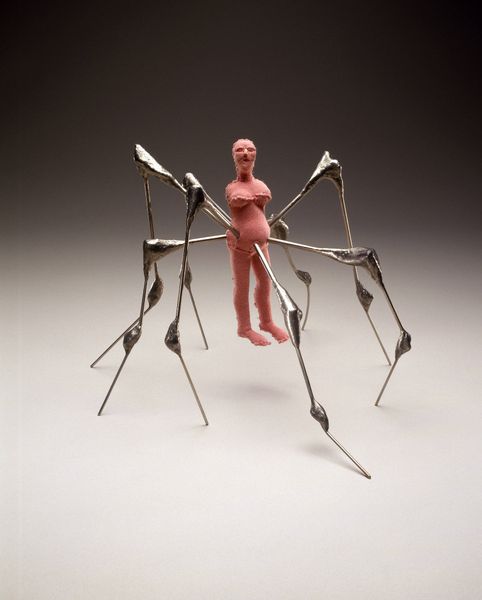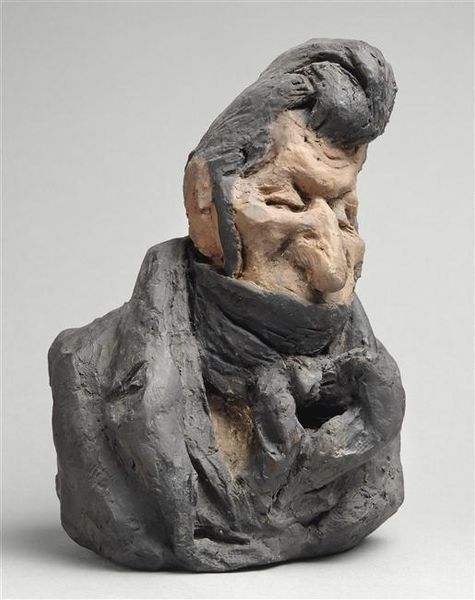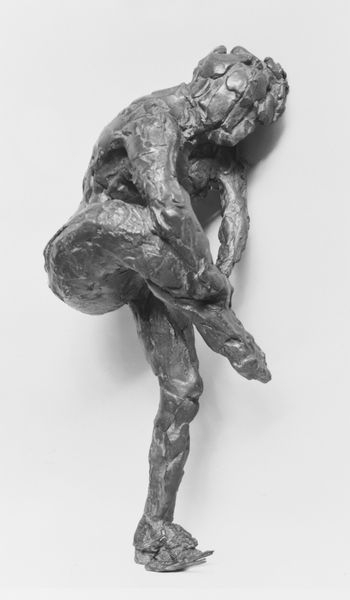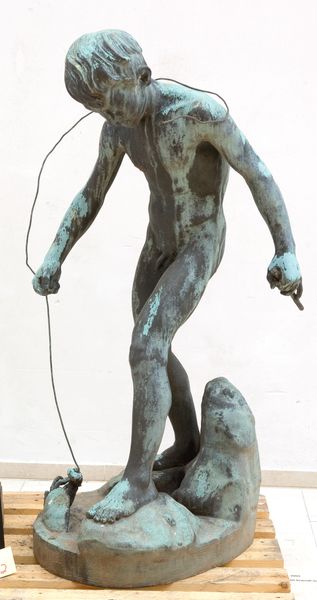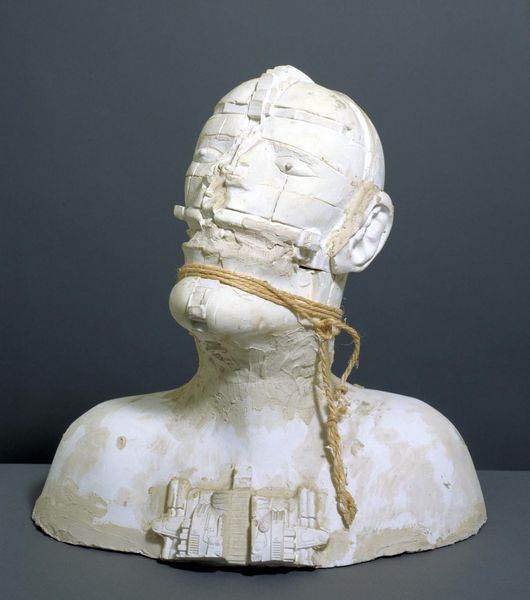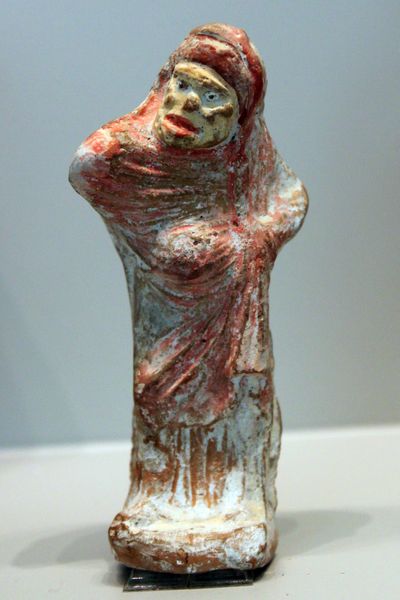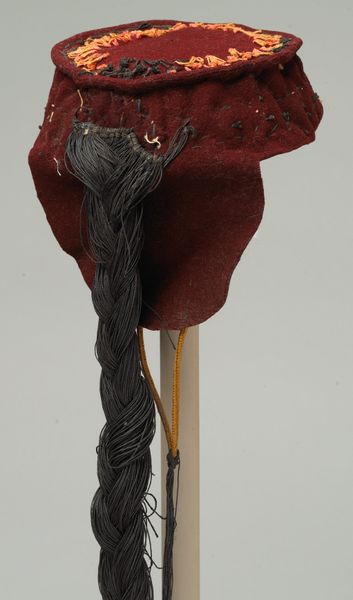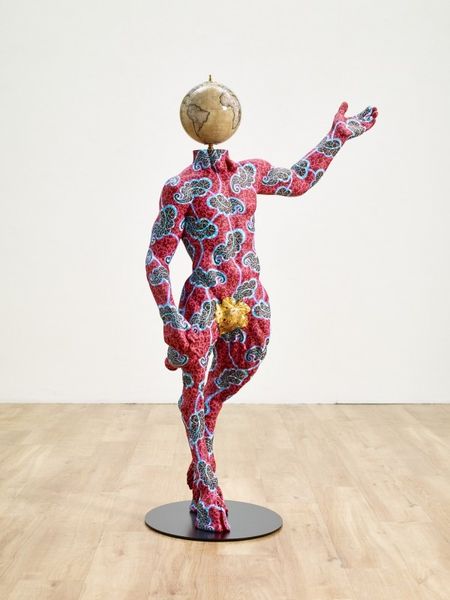![[no title] by Thomas Schütte](/_next/image?url=https%3A%2F%2Fd2w8kbdekdi1gv.cloudfront.net%2FeyJidWNrZXQiOiAiYXJ0ZXJhLWltYWdlcy1idWNrZXQiLCAia2V5IjogImFydHdvcmtzLzIyNmJkMmUxLWVlODgtNDgxYy04ODQ2LWNkNTMyZDZiNGMzYS8yMjZiZDJlMS1lZTg4LTQ4MWMtODg0Ni1jZDUzMmQ2YjRjM2FfZnVsbC5qcGciLCAiZWRpdHMiOiB7InJlc2l6ZSI6IHsid2lkdGgiOiAxOTIwLCAiaGVpZ2h0IjogMTkyMCwgImZpdCI6ICJpbnNpZGUifX19&w=1920&q=75)
Dimensions: displayed: 1910 x 260 x 260 mm
Copyright: © Thomas Schütte, DACS 2014 | CC-BY-NC-ND 4.0 DEED, Photo: Tate
Editor: This untitled sculpture by Thomas Schütte shows two figures bound together. The red and blue faces seem grotesque, and the whole thing feels very raw. What do you see in this piece from a historical perspective? Curator: It's striking, isn't it? Schütte often engages with ideas of power and vulnerability. The binding suggests a loss of agency, perhaps reflecting on historical or contemporary political constraints and how society can restrain individuals. Editor: So, you're saying the figures might represent societal restrictions? Curator: Exactly. How do institutions, traditions, or even political movements, exert control? Are we looking at oppressors and the oppressed, or perhaps two sides of the same coin, mutually trapped? Editor: I hadn’t thought about them as being two sides of the same coin. That changes everything. Curator: Art often challenges us to see those uncomfortable dualities, doesn't it?
Comments
Join the conversation
Join millions of artists and users on Artera today and experience the ultimate creative platform.
tate 8 months ago
⋮
This is one of three sculptures in Tate collection (see Tate T07018 and T07019) which are part of a larger group collectively titled United Enemies 1993-4. Schütte made eighteen similar sculptures each comprising a pair of small male forms bound together and sealed under a glass dome mounted on a cylindrical pillar. He modeled the figures’ heads by hand in coloured fimo, a modeling compound sold in toy shops. The bodies are stuffed rags swaddled on a tripod of doubled beechwood dowel sticks. Schütte bound them in pairs with masking tape and medical sticking plaster. Each couple stands on a shallow wooden plinth set on a tall section of terracotta-coloured plastic drainpipe. Some are trapped facing towards each other; others look away. The figures have bald heads and deeply incised features; their caricatured expressions are reminiscent of the ‘character head’ busts created in the late eighteenth century by Austrian baroque sculptor Franz Xaver Messerschmidt (1736-93). The figures in this sculpture are wrapped in a single piece of yellow toweling, apparently a face flannel to which the manufacturer’s label is still attached. This is bound around the figures, over a section of white sheeting, with blue electrical tape making a dramatic ‘X’. The characters’ heads are marbled in appearance; one is green and white; the other is grey and white with dark brown streaks. Schütte photographed the sculptures’ heads and shoulders close up against a black background and under a bright light. He created a portfolio of ten offset lithographs in an edition of thirty-five from the photographs (see Tate P77752-P77761) subtitled ‘A Play in Ten Scenes’, referring to the theatre of public life. The sculptures were initially installed with the prints, resulting in disorientating disjunctions in scale.
